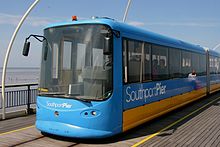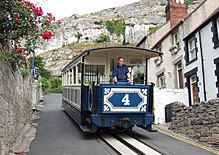This article needs additional citations for verification. (January 2021) |
One of the first railways using 3 ft 6 in (1,067 mm) gauge track was the Little Eaton Gangway in England, constructed as a horse-drawn wagonway in 1795. Other 3 ft 6 in (1,067 mm) gauge wagonways in England and Wales were also built in the early 19th century. Also during this time, numerous tram networks were built in 3 ft 6 in (1,067 mm) gauge (see table below).





Railways
editSee also
editReferences
edit- ^ Silkstone Waggonway, South Yorkshire: Survey Report (PDF). Vol. 1. Yorkshire Archaeological Trust. August 2012.